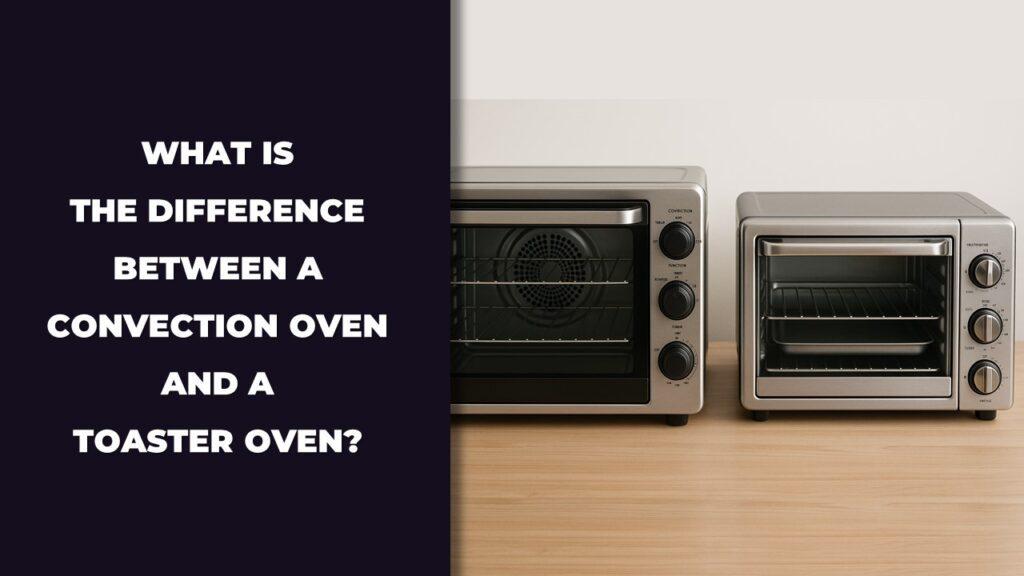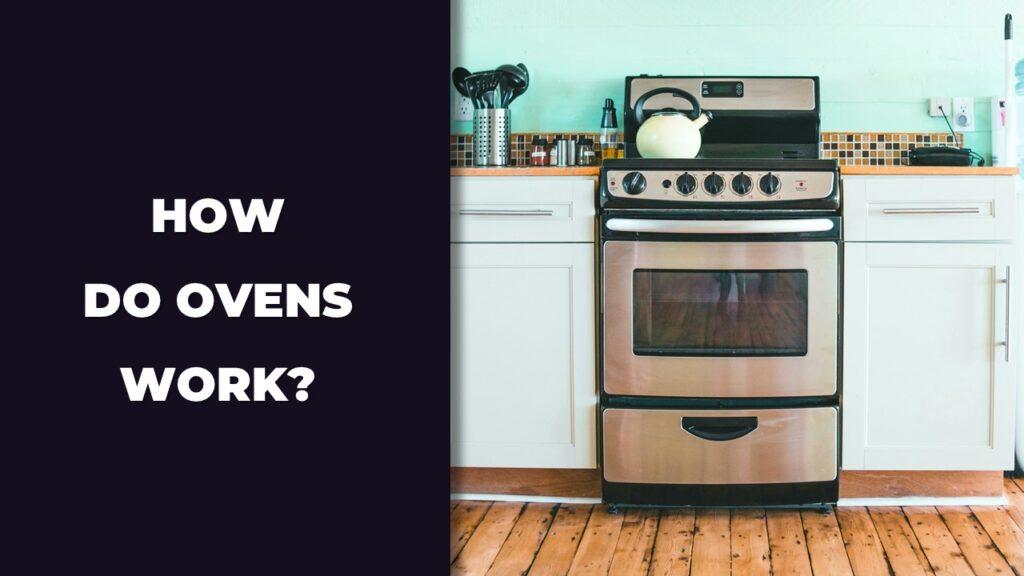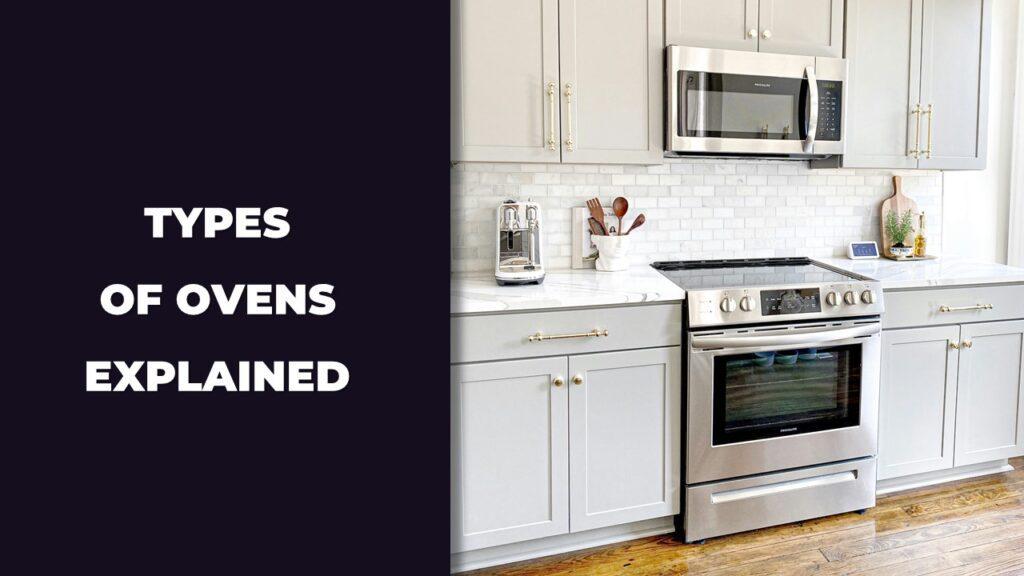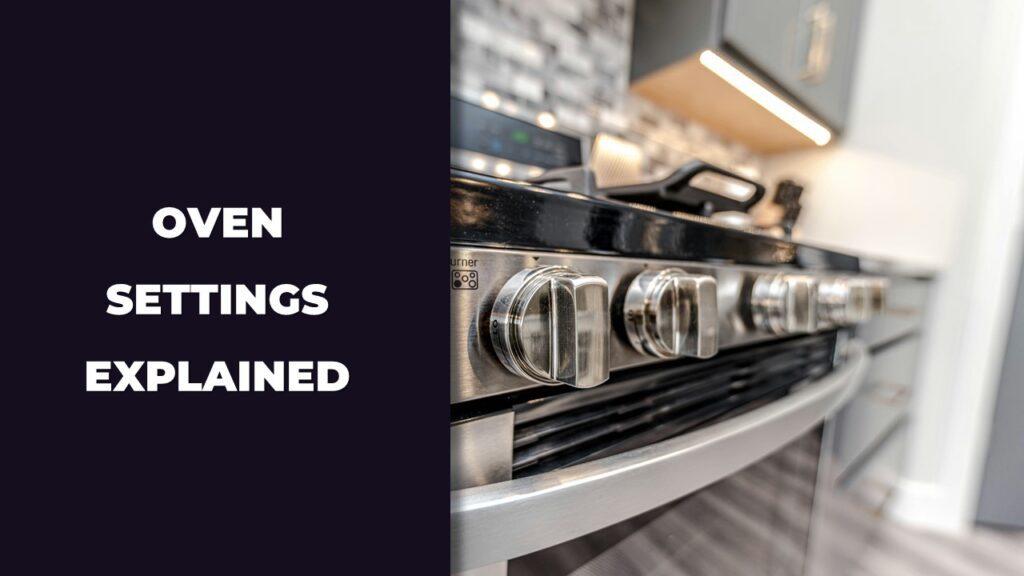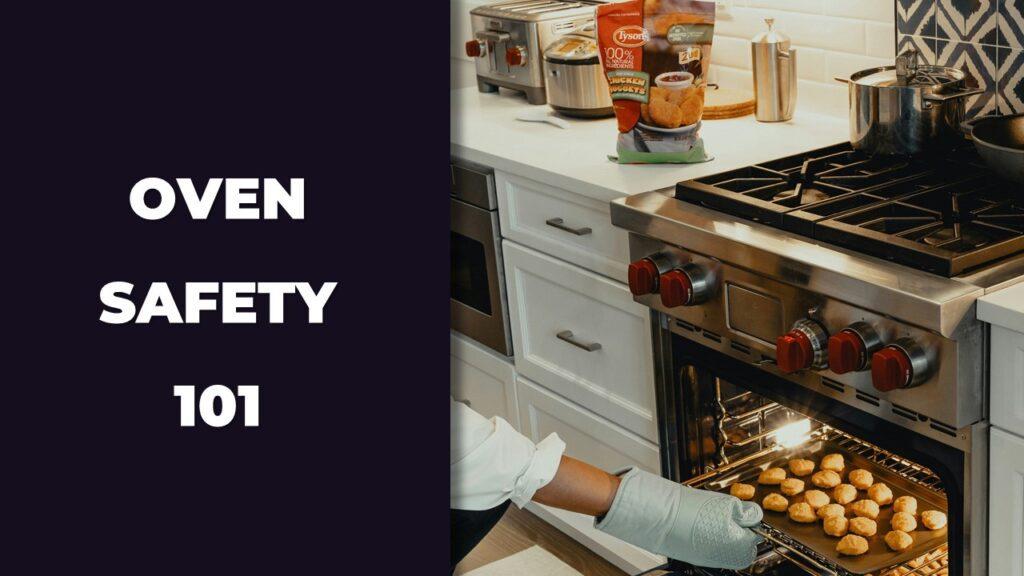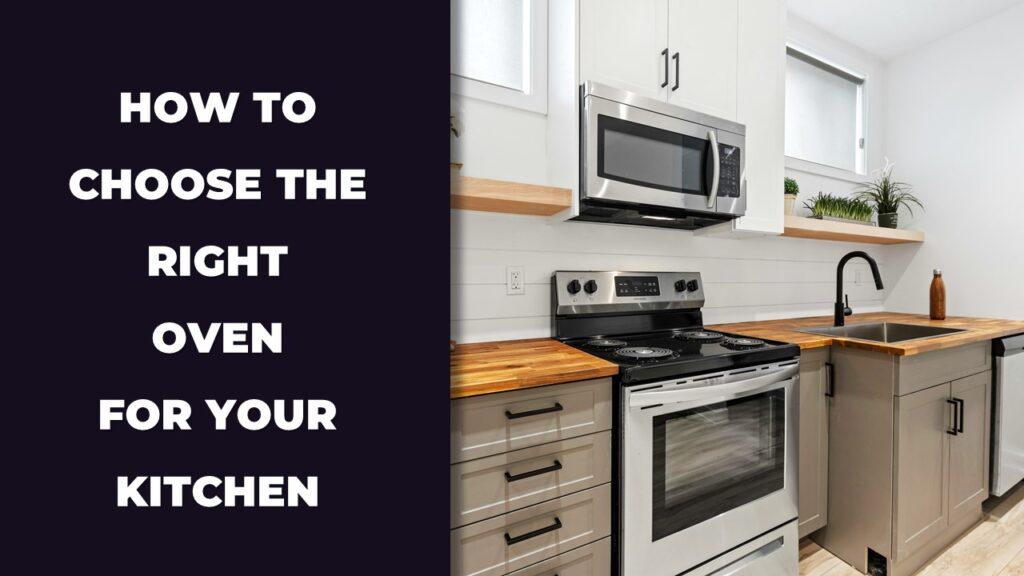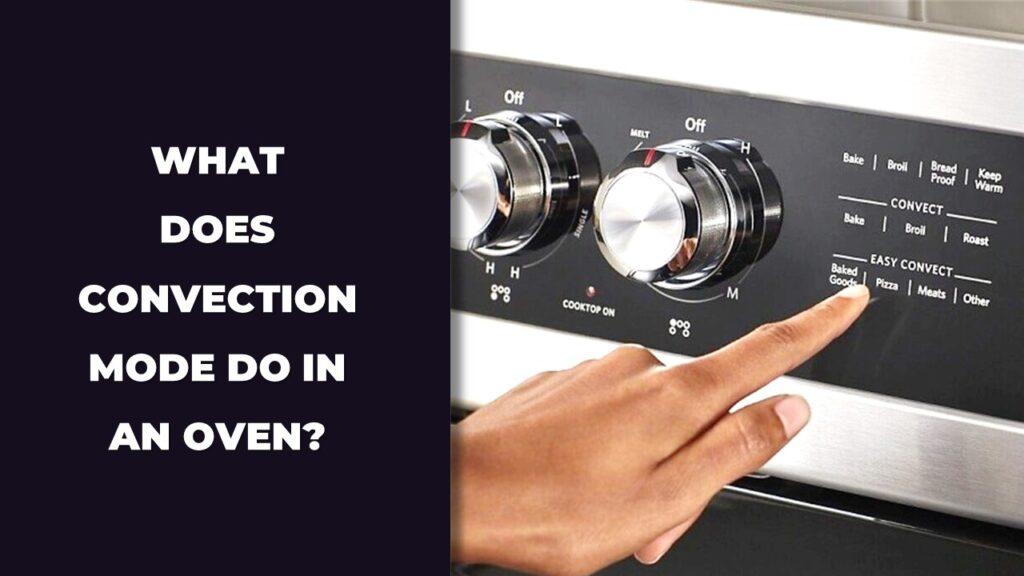
Convection mode in an oven uses a built-in fan and exhaust system to move hot air around your food. This steady airflow cooks food faster, helps it brown better, and makes sure everything cooks evenly, no matter where it’s placed inside. It’s a big step up from regular baking, where heat often stays near the bottom and can leave you with burnt edges and undercooked centers.
In this article, we’re going to break down exactly how convection mode works, when you should use it, when you shouldn’t, and how to get the best results from it.
How Convection Mode Works In An Oven
Convection mode uses a built-in fan and exhaust system to move hot air around the oven. This steady airflow surrounds the food on all sides, helping it cook faster and more evenly than in a regular oven.
In a standard oven, heat rises from the bottom and tends to sit there. That means the top of your food might stay pale while the bottom gets overcooked. Convection mode fixes this by circulating the heat, so every part of your dish gets the same treatment.
This feature is especially helpful when you’re baking multiple trays or roasting large items. The air doesn’t sit still — it wraps around each pan or dish, making sure everything cooks at a steady pace without cold spots or hot zones. Many convection ovens also have a third heating element near the fan (sometimes called “true convection”), which makes the airflow even more consistent.
Benefits Of Using Convection Mode
Convection mode isn’t just a fancy oven feature; it can actually change how your food turns out. It helps with speed, evenness, browning, and even saves you a little on energy.
Faster And More Even Cooking
Convection mode cuts cooking time by up to 25% in many cases. The moving air gets heat to the surface of your food quickly, so it starts cooking right away. There’s less need to rotate pans or move dishes between racks because the heat hits everything evenly.
Better Browning And Crisping
With the fan pulling out moisture from the oven, the surface of your food gets dry faster. That’s what gives roasted vegetables a nice golden crust or helps cookies firm up without getting soggy. It’s great for anything that needs a crisp finish, like chicken skin or pastry tops.
Energy Efficiency
Because convection mode cooks food faster and often at a lower temperature, it uses less energy per meal. That means less time with the oven on and more savings over time, especially if you cook often.
Multi-Rack Cooking Without Flavor Transfer
The circulating air allows you to bake on two or even three racks at once without smells or flavors mixing. You can roast vegetables on one shelf, bake cookies on another, and everything will still taste right. That’s a big help when cooking large meals or prepping ahead.
When To Use Convection Mode
Convection mode is best when you want food to cook evenly, brown nicely, and finish faster. It works especially well for roasting, baking on multiple racks, and any time you want crisp edges without drying out the inside.
Here are common situations where the convection mode gives better results:
- Roasting Meats and Vegetables: Perfect for crispy skin, golden edges, and even cooking without flipping or turning.
- Baking Cookies, Pastries, and Pies: Great for baking on multiple racks without rotating trays — everything browns evenly.
- Toasting or Dehydrating: Helps remove moisture quickly, making it ideal for toast, chips, or drying herbs.
- Cooking Covered Dishes Faster: If the food is covered, convection still speeds up the cooking time without drying it out.
- Batch Cooking or Meal Prep: Allows you to cook multiple dishes at once without flavors mixing or uneven heating.
How To Use Convection Mode Properly
To get the most from convection mode, you need to tweak your temperature, choose the right pans, and pay attention to timing. A few simple changes can make your meals turn out better every time.
Temperature And Time Adjustments
Since convection cooking is more efficient, you usually need to lower the oven temperature by 25°F compared to regular bake settings. Some ovens do this automatically, but not all. It also cooks faster, so keep an eye on the clock — many dishes finish 5 to 10 minutes early.
Choosing The Right Cookware
Use shallow pans or low-sided baking sheets so the air can move around the food. Avoid deep pans that block airflow. For roasting, wire racks in pans can help heat circulate underneath. Glass dishes hold heat longer, so you might need to lower the temperature even more when using them.
Preheating And Monitoring
Always preheat your oven before turning on convection mode — it helps keep the temperature steady from the start. And don’t just rely on the timer. Check your food earlier than the recipe suggests to avoid overcooking. Every oven runs slightly differently, so learning how yours behaves will give you better results.
Understanding Convection Bake Vs Convection Roast
Convection bake and convection roast both use a fan to circulate hot air, but they differ in how and where the heat comes from. Convection bake uses gentler heat, mostly from the bottom, for even baking. Convection roast uses heat from both the top and bottom for higher temps and faster browning, especially useful for meats and crisp textures.
Here’s a quick breakdown before we explain each in detail:
| Feature | Convection Bake | Convection Roast |
| Heat Source | Mainly from the bottom | Both top and bottom |
| Fan Usage | Circulates gently | Circulates with more intensity |
| Best For | Baked goods like cookies or pastries | Roasting meats, vegetables |
| Temperature Style | Lower and steady | Higher and more direct |
| Texture Goal | Even rise and color | Crisp outside, juicy inside |
Convection Bake Mode
This setting uses lower, steady heat and gentle air movement to cook food evenly. It’s perfect for cookies, cakes, muffins, and pies — anything that needs an even rise and smooth texture. The bottom heating element does most of the work, while the fan makes sure heat spreads evenly throughout the oven.
Convection Roast Mode
This mode combines the fan with heat from both the top and bottom elements. It’s designed to sear and crisp the outside of your food while cooking the inside quickly. Use it for whole chickens, pork roasts, or sheet pans of vegetables. It’s great when you want golden skin or caramelized edges without flipping or rotating.
Types Of Convection Ovens And Settings
Not all convection ovens are the same. Some use extra heating elements, some run on gas instead of electric, and others sit right on your countertop. The type you have affects how heat moves and what kind of results you’ll get.
True Convection Vs European Convection
These terms often mean the same thing. Both include a third heating element placed near the fan at the back of the oven. This extra heat lets the fan blow consistently hot air instead of just moving air that was heated by the top or bottom. The result is more even cooking across all racks — helpful when baking multiple trays or roasting large meals.
Gas Vs Electric Convection Ovens
Gas convection ovens heat up faster and add moisture to the air, which is good for roasting but sometimes tricky for baking. Electric convection ovens provide drier heat and more precise temperature control, making them better for pastries and baked goods. Both types use fans, but how they manage humidity and heat flow is different.
Countertop Convection Ovens (Aka Air Fryers)
These smaller ovens work just like regular convection models, but on a compact scale. They use a fan and direct heat to cook food quickly and evenly. Many are marketed as air fryers because they can crisp up food without much oil. They’re great for small kitchens, quick meals, or when you don’t want to heat your full-size oven.
Common Mistakes To Avoid With Convection Mode
One of the biggest mistakes people make with convection mode is using it like a regular oven. Convection cooking needs small adjustments in temperature, time, and cookware to work properly. Ignoring these changes can lead to uneven baking, dry food, or burnt edges.
- Not Reducing Temperature: Many forget to lower the heat by 25°F, which can lead to overcooked food.
- Using Deep Or Covered Pans: These block airflow, making the convection feature less effective.
- Skipping Preheat Time: Starting with a cold oven throws off timing and texture.
- Overcrowding The Oven: Blocking air circulation leads to uneven cooking. Leave space between trays.
- Using It for the Wrong Foods: Delicate batters like soufflés, custards, or some cakes may not rise properly in convection mode.
Final Thoughts
If you want faster cooking, better browning, and evenly cooked meals, convection mode is worth using. It’s especially helpful for roasting meats, baking multiple trays, or crisping up vegetables without burning the edges.
That said, it’s not ideal for everything. Some baked goods like sponge cakes or delicate batters may come out lopsided or dry if the air circulation is too strong. So it’s okay to switch back to regular bake when needed.
Once you get used to how your oven behaves, convection mode can make everyday cooking easier, quicker, and more reliable. With a few small adjustments, it’s a smart feature that can save you time and give better results in the kitchen.
Related FAQs
Can You Use Foil In A Convection Oven?
Yes, but be careful. Foil can block airflow if it covers racks or the oven floor. Only use it to line pans or wrap food, and keep it away from fan vents and heating elements.
Is Convection Better Than Regular Baking?
It depends on what you’re cooking. Convection is better for roasting and multi-tray baking because it cooks evenly and faster. But for delicate items like cakes, regular bake might give better results.
Why Do Recipes Say Not To Use Convection?
Some recipes are written for standard ovens. The blowing air can change how certain dishes rise, brown, or set, especially soft batters. Unless the recipe mentions convection, it’s safer to stick with regular bake.
Should I Always Cook With Convection Mode?
No, not always. It’s great for roasting, crisping, and batch baking. But for custards, soufflés, and certain cakes, regular bake mode gives more stable results.
What Is The Difference Between Convection And Air Fryer?
Both use hot air and fans, but air fryers are smaller and cook at higher speeds with more direct airflow. Convection ovens work on a larger scale and are more versatile for everyday baking and roasting.

At our core, we’re a group of passionate households and gardening tools and appliances users and enthusiasts. We dive deep into the world of tech, especially when it’s about your household or gardening electric items. We try to provide as much value to the readers with our information and how to blog articles as possible. For affiliate articles our honest and transparent reviews of essential tech products are rooted in real-world experience. We take great satisfaction in offering unbiased evaluations, ensuring that you can make informed decisions when investing in your desired techs.

